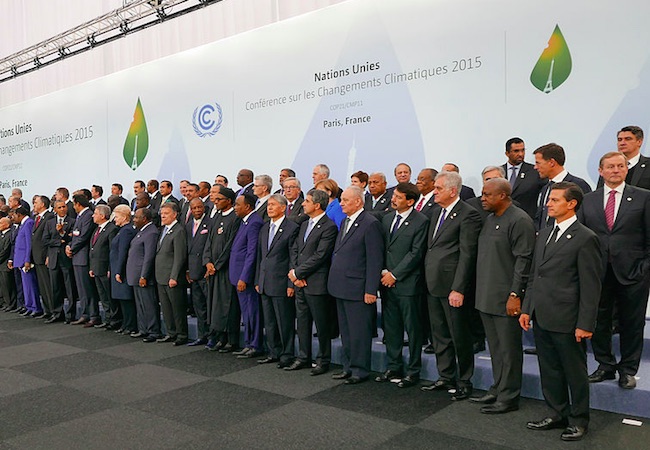Climate change: process or event?

By Sankalp Singh
“If you do not change direction, you may end up where you are heading” –Lao Tzu
Climate on Earth was changing dramatically when humans emerged. Some critical evolutionary trajectory coincides together with climate change. See Africa[1], for instance, It changed from Wooded Areas to open grasslands. While Climate change was the paradigm to be a reality, Political Economy was also on the race course to get the lead with global environment conventions. Global Environment debates revolve around four important factors (namely Carbon Dioxide, Volcanic Eruptions, Solar Output and Earth’s Orbital Behaviour). As a result, Earth’s climate is changing and revolving around new dimensions of contempocentrism. Simple meaning of contempocentrism is human “pre-occupation” with the present, costing “future generations”.[2] Some of the earth’s changes have been primarily due to natural causes, but others are attributed to homo-sapiens activities. They are mainly explored through deforestation and atmospheric emissions. Deforestation led to deterioration of natural habitat by force, atmospheric emissions led to exponential emergence of Green House Gases (GHG).[3] Greenhouse gases trap heat and raise air temperature on the ground. The greenhouse gases like CO2 stop some of the ‘heat’ from sun escaping into space. This is the “Greenhouse Effect”.
Prime concern about climate change is the mechanism of its nexus. Climate change mainly impact through water. This is evident in the form of drought and floods. Water produces energy, energy provides water services. Climate change can be associated with adverse health outcomes (Reduced work capacity due to excess heat, asthma leading to respiratory disorder etc.) .We can easily see the amplified rates of human conflict can represent a large and critical impact of anthropogenic climate change. What was the nexus behind the Syrian War? It can be answered through mismanagement of resources. A Five-year straight drought (2011-2016)[4] led to a toss of the Syrian Farmland. Climate diplomacy needs to arrive at pertinent observations before establishing the institutions such as World Business council for Sustainable Development.[5] In 1992, a UN conference on Environment and Sustainable Development (UNCED) was the topic of the era. We can point out the fact that disasters like Chernobyl Nuclear disaster; Ozone Holes in Antarctica was never planned nor solicited.[6] The only summit perhaps opened the window of International policy debate was the Earth Summit 1992(also called “Rio Summit of ’92). Representatives of 178 nations met in Brazil to consider the fact about ever rising dimensions of environmental disorder.[7] This convention however is remembered more for its political outcomes rather than environmental transition.[8] The Rio declaration was the action result of Failed Stockholm Conference of 1972.[9] Agenda 21 is what is remembered as an output from Rio in 1992. Looking at the document reveals the political economy of nations. ‘Atmosphere’ as a chapter would work against economic interest in Arab Countries. Climate conventions were signed by 150 nations, entered into effect in 1994. United States of America opposed the convention. Articles of the Rio Summit deals with the stabilization of atmospheric concentration of GHGs. Developed countries were the prime leaders in adopting climate change and mitigation policies. US became the major impactor in changing and even modifying “targets” of emissions. This presents a compelling argument of the “North-South Debate”.[10] While North is a just and established world, south still seeks the aid from north to work out its world of development. This debate was not over post Stockholm conference. A deed of providing aid by North to the south to improve its environmental structure was the objective behind developing nation’s rendezvous in Rio. Sustainable development is the major concern today. Environmentalists view it as a hope for the better world. They focus on the word ‘sustainable’. The nations view it as a hope for strategic capital accumulation. They focus on the word ‘development’; we can see Ronald Coase’s theory on Externalities[11] entering right away. Rio Summit was not a clear success as a result of anthropogenic approach. Rio summit should have projected environment and nature more, not the world’s needs and developments. The stubborn leadership of US[12], rise of ‘donor ship’, ‘third world poverty’ and the 1991 gulf war were also reasons that led to Rio’s failure. Moreover, dropping 200 nations to a common ground, sovereignty had to take its back seat. Creation of United Nations Sustainable Development (UNSD) in New York in 1993 was another added dimension to anthropogenic approach which evidently led to global climate deterioration.
References
- Rio +23 World Humanitarian Summit
- Lamont Hempel. ‘Environmental Governance’
- Canada Meteorological Department. ‘Ozone Depletion and Climate Change’
- See Syrian War crisis (last visited 19 February 2017).
- World Business Council for Sustainable Development: Vision 2050 (last visited 19 February 2017)
- See Chernobyl and Nuclear Accidents – available at (last visited 19 February 2017)
- See Rio Declaration (last visited 19 February 2017)
- See Looking back at the Rio Summit
- See Thoughts on Stockholm Conference
- See North South Debate (Last visited 19 February 2017).
- See Externalities explanation (Last visited 19 February 2017).
- See US Diplomacy in Rio Summit (Last visited 19 February 2017).
Sankalp Singh is a student pursuing Master’s degree in Public Policy (2016-2018) from St. Xavier’s College, Mumbai (India).




